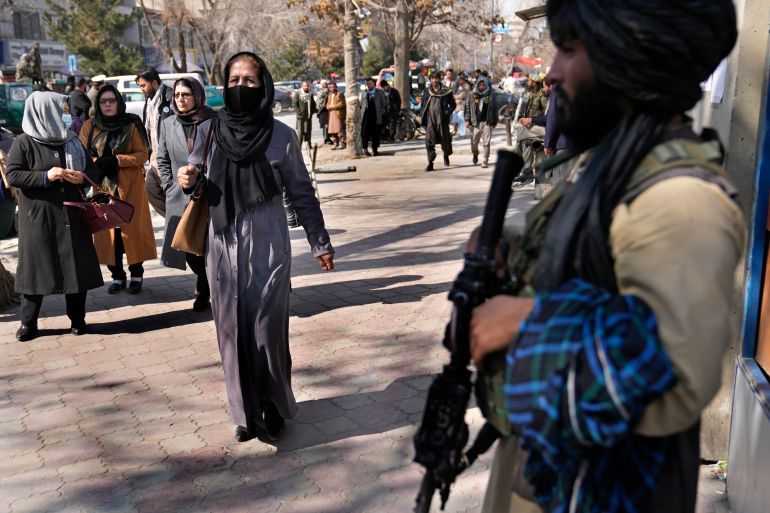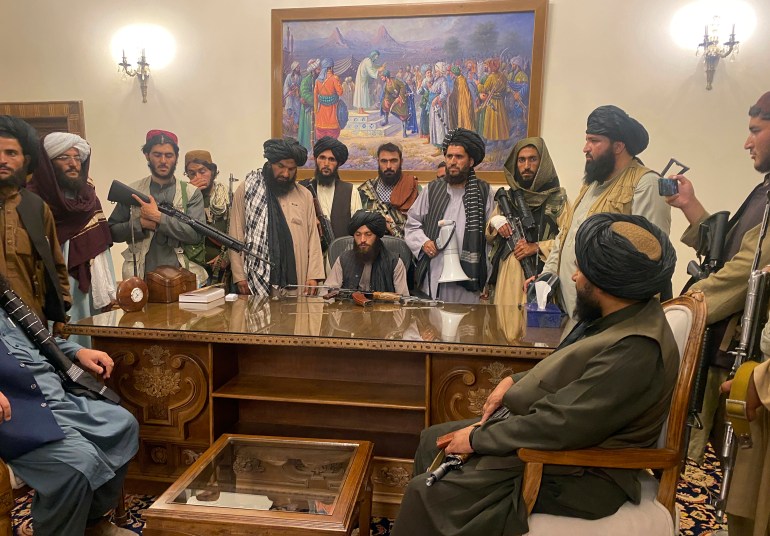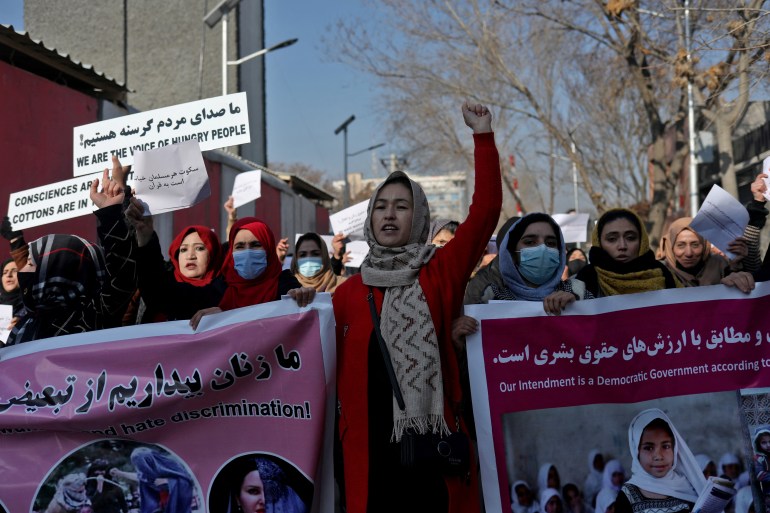Key events since Taliban takeover of Afghanistan a year ago
The group made a stunning return to power on August 15 last year as the US-led forces withdrew from the country after two decades.

The Taliban stormed back to power a year ago as the United States-led forces withdrew from the country, two decades after first removing the regime.
Following its lightning offensive that started from the southern province of Kandahar, the armed group made a stunning return to power on August 15 last year.
Keep reading
list of 4 itemsTaliban call for unfreezing of bank funds after deadly earthquake
Shrinking public space for Afghan women as Taliban expands curbs
Afghanistan world’s unhappiest country, even before Taliban
Here are the key events of the past 12 months:
Taliban takes Kabul
As the US and its allies begin withdrawing their forces from Afghanistan, the Taliban launches a final offensive to win back control of the country they ran between 1996 and 2001.
In August, the group accelerates its campaign, seizing a string of cities in a lightning 10-day sweep across the country that culminates with the fall of the capital, Kabul, on August 15, 2021.
President Ashraf Ghani flees to Abu Dhabi, admitting the “Taliban have won”.
Thousands of terrified Afghans and foreigners rush to Kabul airport in a frenzied scramble to board the last flights out of the country.
Washington freezes some $7bn in Afghan reserves in US banks, and donors suspend or dramatically reduce their aid to the country.

US completes chaotic exit
Chaos reigns at the airport, where several people were crushed to death while trying to get onto the tarmac as the US and its allies hastily evacuate their citizens and Afghan nationals who aided the outgoing government.
On August 26, a suicide bomb rips through the crowds, killing more than 100 people, including 13 US service members.
The ISIL (ISIS) group’s chapter in Afghanistan and Pakistan, rivals of the Taliban, claims responsibility for the attack.
Four days later, the Taliban celebrates as the last American forces and their allies leave on August 30.
Religious police return
Despite the Taliban’s claim to have ended its repressive ways, the signs are inauspicious. A new interim government is unveiled in September, with hardliners in all key posts and no women.
The Taliban also brings back the feared Ministry for the Promotion of Virtue and the Prevention of Vice, enforcing the group’s austere interpretation of Islam.
The actions prompt protests in Kabul and Herat, where two people are shot dead.

ISIL attacks mosques
In October, blasts tear through a Shia mosque in Kandahar during Friday prayers, killing 60 people in the deadliest attack since the departure of US troops.
The attack, claimed by Afghanistan’s ISIL chapter, comes a week after a suicide attack at another Shia mosque in the northern city of Kunduz in which dozens were killed.
Oslo hosts talks with Taliban
Deprived of aid, Afghanistan is plunged into a deep economic and humanitarian crisis.
Norway invites the Taliban for talks with members of Afghanistan’s civil society and Western diplomats in Oslo.
An all-male Taliban delegation travels to the meeting, during which officials from the US and Europe explore the possibility of providing aid directly to the Afghan people.
Girls barred from school
In March, the Taliban authorities block secondary school girls from returning to class, hours after schools reopen. They also instruct that government employees must grow beards.
Women ordered to cover up
In May, women and girls are ordered to wear the hijab and cover their faces when in public, with the religious police saying they prefer women to stay at home.
Female TV presenters are among those targeted by the measure, sparking an international outcry.
Women are also banned from making long-distance journeys alone and allowed to visit public parks in the capital only on days when men are not permitted.
Massive earthquake
More than 1,000 people are killed and thousands left homeless when an earthquake strikes Afghanistan’s border with Pakistan on June 22.
The disaster poses a huge logistical challenge for the Taliban government, which has not been formally recognised by any country.
International aid agencies come to the rescue, sending food, tents and medical supplies.
Al-Qaeda chief killed in US drone strike
On August 2 this year, President Joe Biden announces the killing of al-Qaeda chief Ayman al-Zawahiri, the suspected mastermind of the September 11, 2001 attacks in the US, in a drone strike on his Kabul hideout.
The Taliban condemns the strike but does not confirm al-Zawahiri’s death, saying it was investigating the US claim.